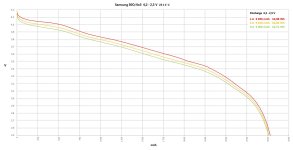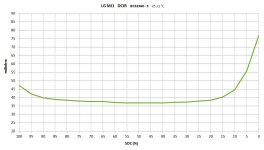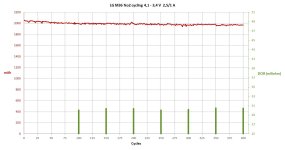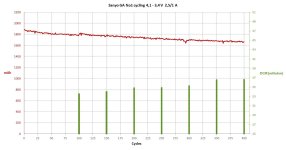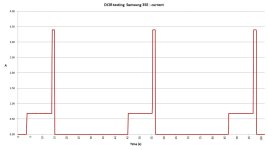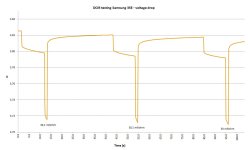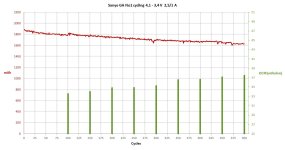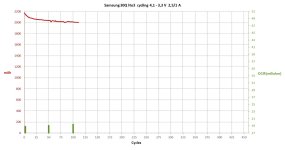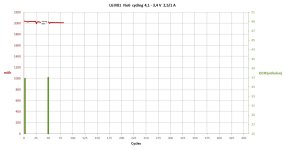john61ct said:
Chemistry is indeed important.
Finally, it was akin to pulling teeth to get someone to finally admit that the apparent DCIR differences between PanasonicPF & SanyoGA (NCA chemistry) versus LG Chem M29 & LG Chem M36 (NMC chemistry) is due in no small measure to their different chemical recipes; especially the inclusion of Nickel which to some extent has been anointed as the premier Li-ion metal ...
Lithium Manganese Nickel Cobalt Oxide2 ~ LiNiMnCoO2 - NMC (INR)
Lithium Nickel Cobalt Aluminum Oxide2 LiNiCoAlO2 -- NCA
Don't get me wrong! This is not to say that NCA is a DCIR dog as it too incorporates Nickel in its recipe. Also being that Tesla is sticking with NCA chemistry (even though Toyota isn't (NMC) it would be premature to write-off NCA chemistry as sub-par to NMC as it's all about application, application, application. We don't know what NCA hybrid recipe Elon and Panasonic may have in the works as progress marches ahead.
john61ct said:
And, have you confirmed yet that the 29E is NCO?
Did you mean to say NCA. If so, it is not NCA chemistry, but rather NMC chemistry which is the chemistry of INR 18650 cells (Samsung INR18650-29E). Samsung, Sony and LG are all experimenting and developing next-gen INR batteries with different ratios of manganese, nickel, and cobalt that for the sake of KIS will refer to as NMC. Some other NMC~(INR)18650 cells besides M29 are: Samsung 30Q, Sony VTC6 and LG HE2.
Truth tell, i don't know of another NCA 18650 cell besides PanasonicPF and SanyoGA. You've probably read this already while googling with the reader comment that ...
"Samsung 29E is NCM not NCO according to this: (link provided)" but the link listed is no longer available.
Here's Battery University's take on NMC ... https://batteryuniversity.com/learn/article/types_of_lithium_ion
"NMC is the battery of choice for power tools, e-bikes and other electric powertrains. The cathode combination is typically one-third nickel, one-third manganese and one-third cobalt, also known as 1-1-1. This offers a unique blend that also lowers the raw material cost due to reduced cobalt content. Another successful combination is NCM with 5 parts nickel, 3 parts cobalt and 2 parts manganese (5-3-2)."
INR - NMC - Lithium Nickel Manganese Cobalt
This NMC chemistry adds nickel to the IMR chemistry, that has been referred to as a "hybrid" chemistry, but it's been so popular for so long that the days of NMC being a "hybrid" may no longer be as applicable in that it's becoming an industry norm of sorts. Being that both 1-1-1 and 5-3-2 are considered NMC it's more a situation that any 18650 cell that incorporates both Nickel and Manganese is considered NMC until the industry's 18650 BIG Boys (i.e. LG, Samsung, Sony) come up with another "cool" abbreviated 18650 chemistry. Both INR18650-25R and INR18650-29E use NMC chemistry, but they ain't the same critter as progress marches on with NMC "hybrid" recipes and possibly a newer NCA recipe in the new Tesla Cybertruck. :thumb:


